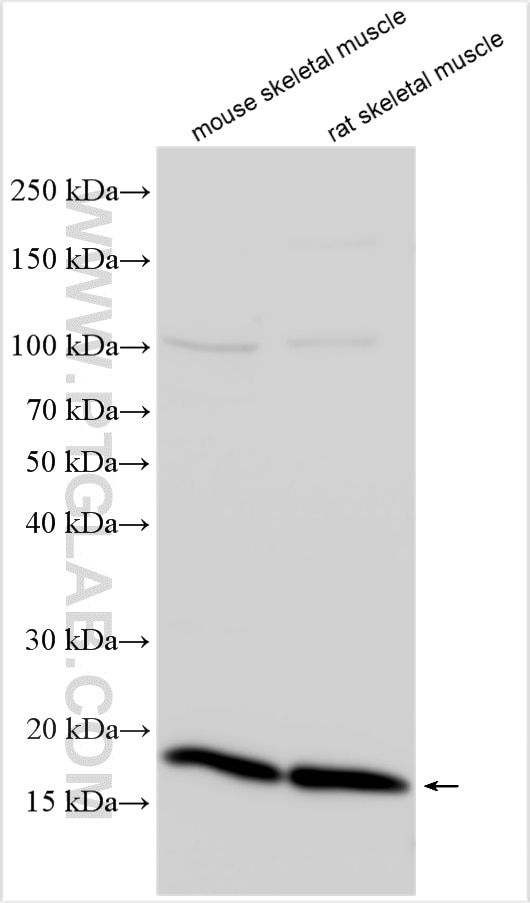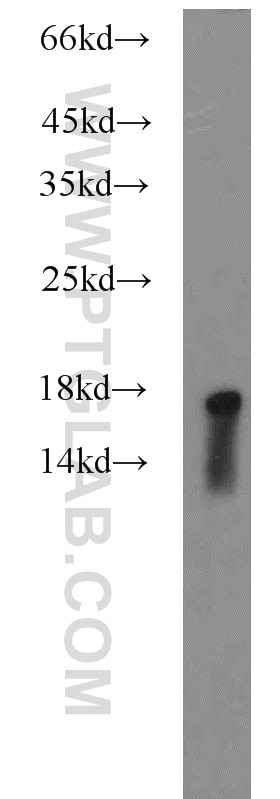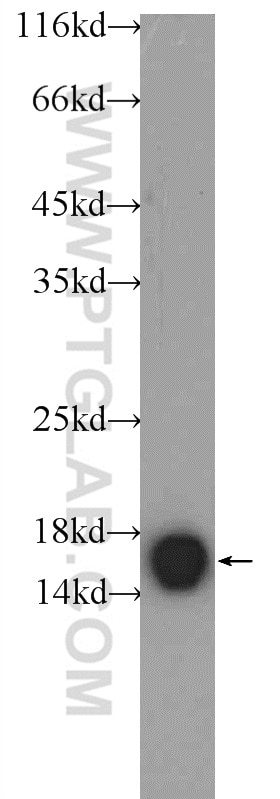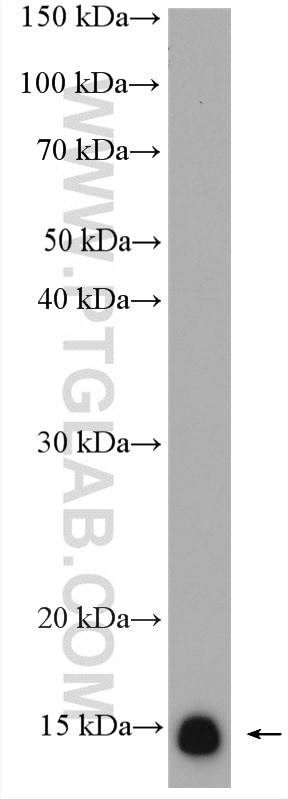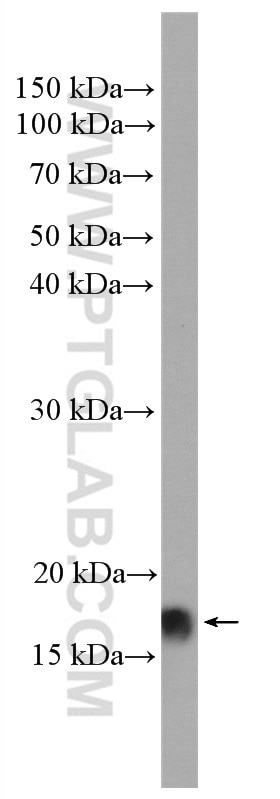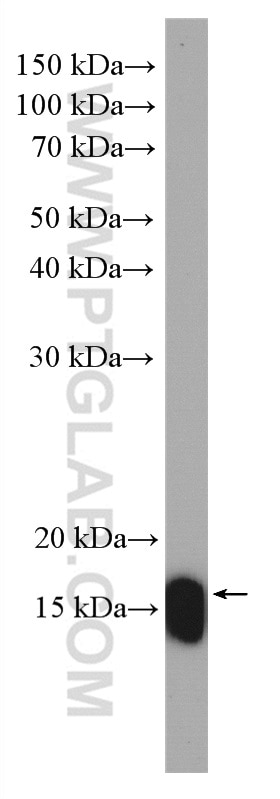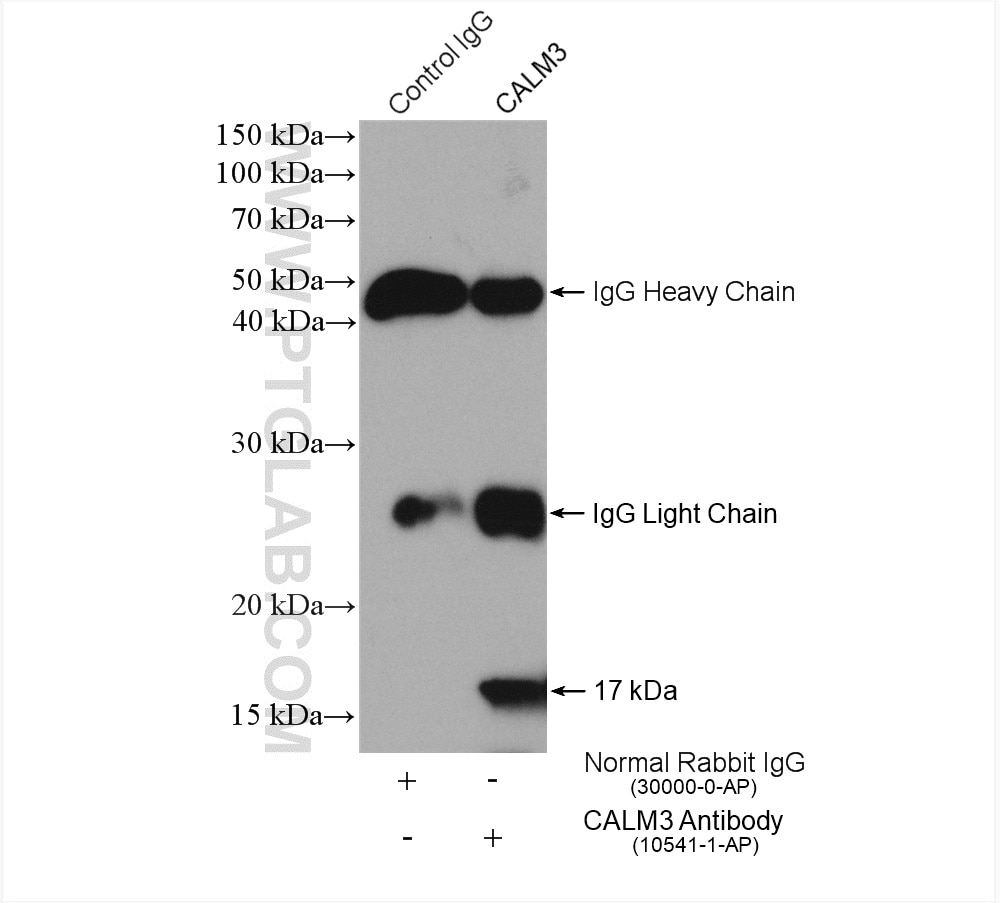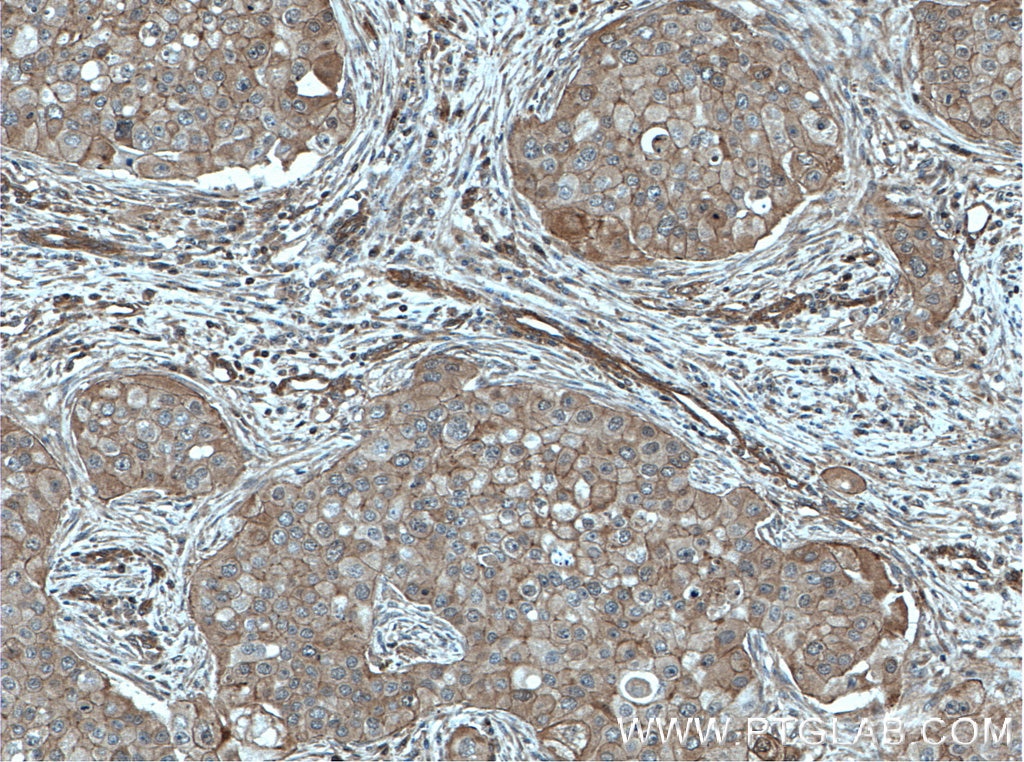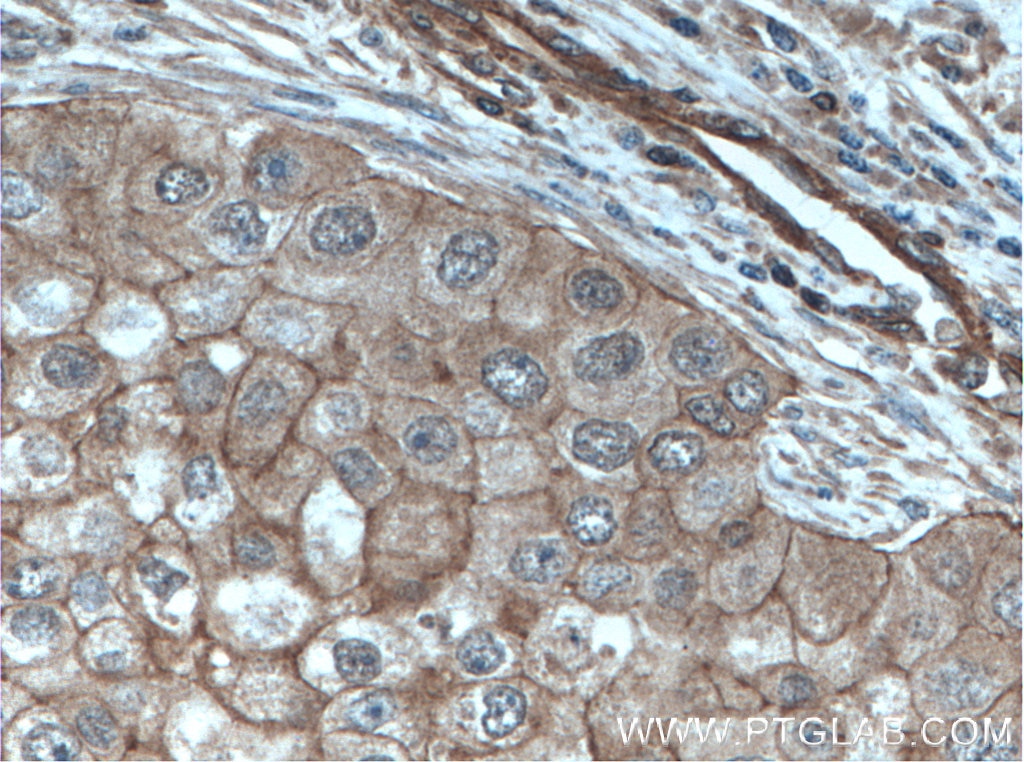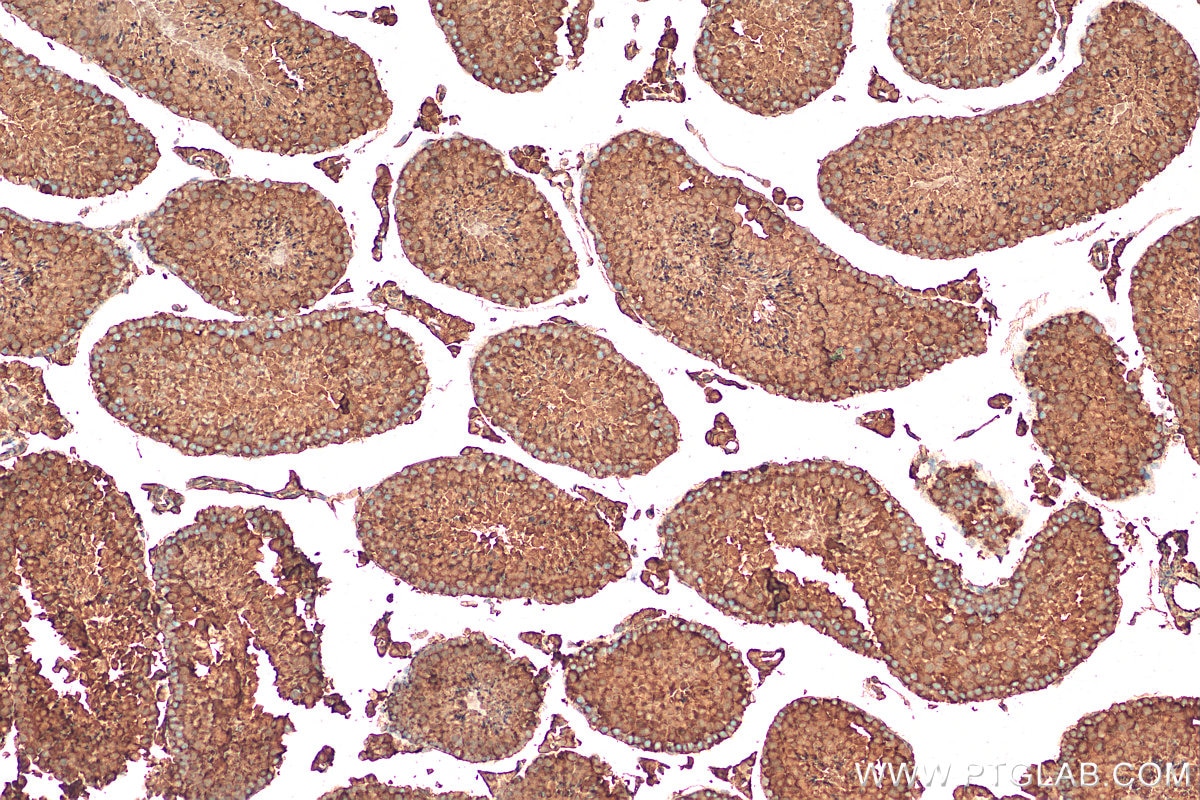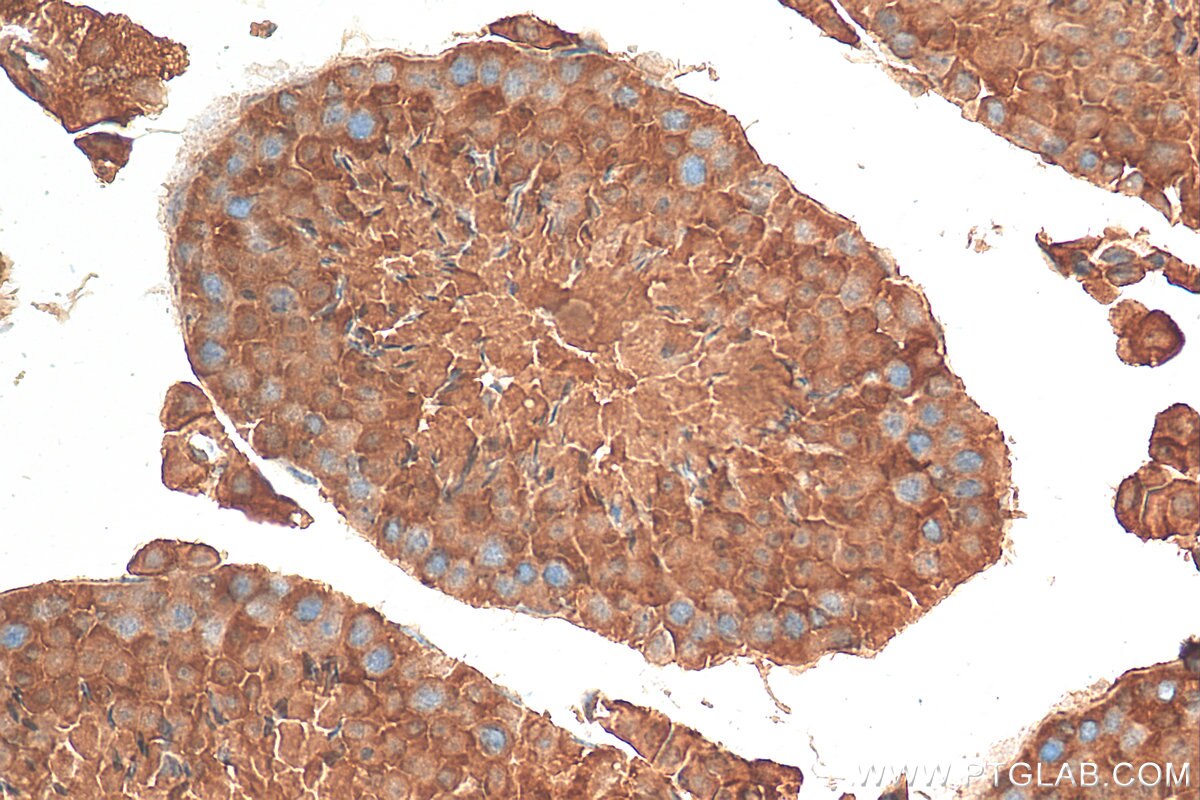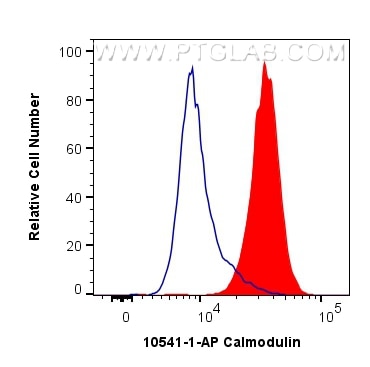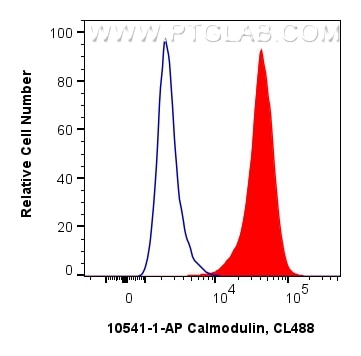Anticorps Polyclonal de lapin anti-Calmodulin
Calmodulin Polyclonal Antibody for WB, IHC, FC (Intra), IP, ELISA
Hôte / Isotype
Lapin / IgG
Réactivité testée
Humain, rat, souris
Applications
WB, IHC, FC (Intra), IP, ELISA
Conjugaison
Non conjugué
N° de cat : 10541-1-AP
Synonymes
Galerie de données de validation
Applications testées
| Résultats positifs en WB | tissu de muscle squelettique de souris, cellules HeLa, cellules HepG2, cellules MCF-7, cellules NCCIT, tissu cérébral de souris, tissu de muscle squelettique de rat |
| Résultats positifs en IP | cellules Ramos, |
| Résultats positifs en IHC | tissu de cancer du sein humain, tissu testiculaire de souris il est suggéré de démasquer l'antigène avec un tampon de TE buffer pH 9.0; (*) À défaut, 'le démasquage de l'antigène peut être 'effectué avec un tampon citrate pH 6,0. |
| Résultats positifs en FC (Intra) | cellules HeLa, cellules MCF-7 |
Dilution recommandée
| Application | Dilution |
|---|---|
| Western Blot (WB) | WB : 1:500-1:2000 |
| Immunoprécipitation (IP) | IP : 0.5-4.0 ug for 1.0-3.0 mg of total protein lysate |
| Immunohistochimie (IHC) | IHC : 1:50-1:500 |
| Flow Cytometry (FC) (INTRA) | FC (INTRA) : 0.40 ug per 10^6 cells in a 100 µl suspension |
| It is recommended that this reagent should be titrated in each testing system to obtain optimal results. | |
| Sample-dependent, check data in validation data gallery | |
Applications publiées
| WB | See 7 publications below |
| IHC | See 2 publications below |
| IP | See 2 publications below |
Informations sur le produit
10541-1-AP cible Calmodulin dans les applications de WB, IHC, FC (Intra), IP, ELISA et montre une réactivité avec des échantillons Humain, rat, souris
| Réactivité | Humain, rat, souris |
| Réactivité citée | rat, Humain, souris |
| Hôte / Isotype | Lapin / IgG |
| Clonalité | Polyclonal |
| Type | Anticorps |
| Immunogène | Calmodulin Protéine recombinante Ag0827 |
| Nom complet | calmodulin 3 (phosphorylase kinase, delta) |
| Masse moléculaire calculée | 17 kDa |
| Poids moléculaire observé | 17 kDa |
| Numéro d’acquisition GenBank | BC006182 |
| Symbole du gène | Calmodulin 3 |
| Identification du gène (NCBI) | 808 |
| Conjugaison | Non conjugué |
| Forme | Liquide |
| Méthode de purification | Purification par affinité contre l'antigène |
| Tampon de stockage | PBS avec azoture de sodium à 0,02 % et glycérol à 50 % pH 7,3 |
| Conditions de stockage | Stocker à -20°C. Stable pendant un an après l'expédition. L'aliquotage n'est pas nécessaire pour le stockage à -20oC Les 20ul contiennent 0,1% de BSA. |
Informations générales
Calmodulin (CaM) is a Ca(2+)-binding protein that transduces Ca2+-mediated signals by binding to and regulating the activity of hundreds of enzymes and non-enzymatic proteins. It is highly conserved across species and involved in many biological processes, including vesicle release, cell proliferation, and apoptosis. This antibody can recognize CALM1, CALM2 and CALM3.
Protocole
| Product Specific Protocols | |
|---|---|
| WB protocol for Calmodulin antibody 10541-1-AP | Download protocol |
| IHC protocol for Calmodulin antibody 10541-1-AP | Download protocol |
| IP protocol for Calmodulin antibody 10541-1-AP | Download protocol |
| FC protocol for Calmodulin antibody 10541-1-AP | Download protocol |
| Standard Protocols | |
|---|---|
| Click here to view our Standard Protocols |
Publications
| Species | Application | Title |
|---|---|---|
Nat Commun Stalled translation by mitochondrial stress upregulates a CNOT4-ZNF598 ribosomal quality control pathway important for tissue homeostasis | ||
Autophagy Periplocin suppresses the growth of colorectal cancer cells by triggering LGALS3 (galectin 3)-mediated lysophagy | ||
Cancer Cell Int CALM1 promotes progression and dampens chemosensitivity to EGFR inhibitor in esophageal squamous cell carcinoma. | ||
Neurochem Int Alpha-synuclein overexpression increases phospho-protein phosphatase 2A levels via formation of calmodulin/Src complex. | ||
Biochem Biophys Res Commun The NMDAR GluN1-1a C-terminus binds to CaM and regulates synaptic function. | ||
J Cardiovasc Transl Res TRPC1 Deficiency Impairs the Endothelial Progenitor Cell Function via Inhibition of Calmodulin/eNOS Pathway. |
